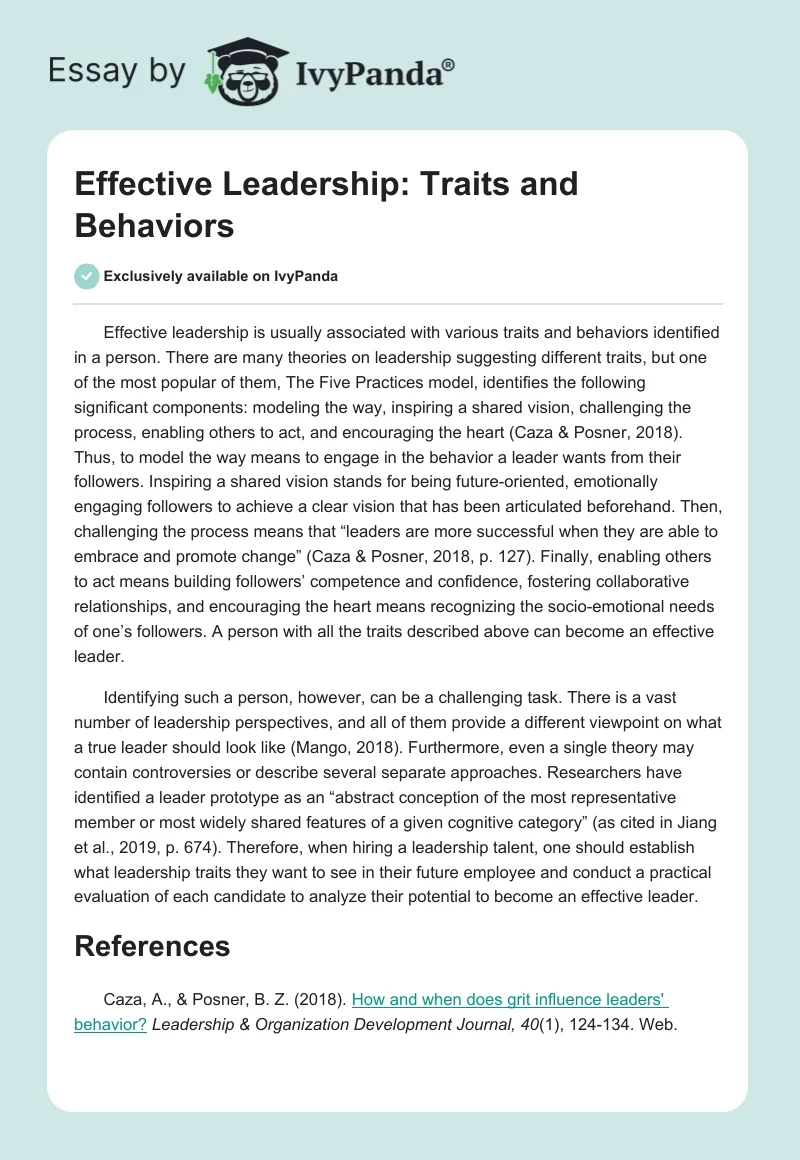Effective leadership is usually associated with various traits and behaviors identified in a person. There are many theories on leadership suggesting different traits, but one of the most popular of them, The Five Practices model, identifies the following significant components: modeling the way, inspiring a shared vision, challenging the process, enabling others to act, and encouraging the heart (Caza & Posner, 2018). Thus, to model the way means to engage in the behavior a leader wants from their followers. Inspiring a shared vision stands for being future-oriented, emotionally engaging followers to achieve a clear vision that has been articulated beforehand. Then, challenging the process means that “leaders are more successful when they are able to embrace and promote change” (Caza & Posner, 2018, p. 127). Finally, enabling others to act means building followers’ competence and confidence, fostering collaborative relationships, and encouraging the heart means recognizing the socio-emotional needs of one’s followers. A person with all the traits described above can become an effective leader.
Identifying such a person, however, can be a challenging task. There is a vast number of leadership perspectives, and all of them provide a different viewpoint on what a true leader should look like (Mango, 2018). Furthermore, even a single theory may contain controversies or describe several separate approaches. Researchers have identified a leader prototype as an “abstract conception of the most representative member or most widely shared features of a given cognitive category” (as cited in Jiang et al., 2019, p. 674). Therefore, when hiring a leadership talent, one should establish what leadership traits they want to see in their future employee and conduct a practical evaluation of each candidate to analyze their potential to become an effective leader.
References
Caza, A., & Posner, B. Z. (2018). How and when does grit influence leaders’ behavior?Leadership & Organization Development Journal, 40(1), 124-134. Web.
Mango, E. (2018). Rethinking leadership theories.Open Journal of Leadership, 7(1), 57-88. Web.
Jiang, X., Xu, S., Houghton, J. D., & Manz, C. C. (2019). Shades of grey in implicit effective leadership: Searching for clarity in the midst of paradox.Leadership, 15(6), 673-695. Web.


